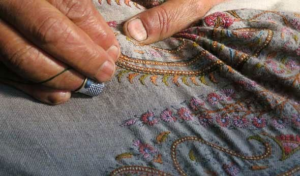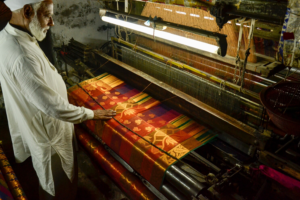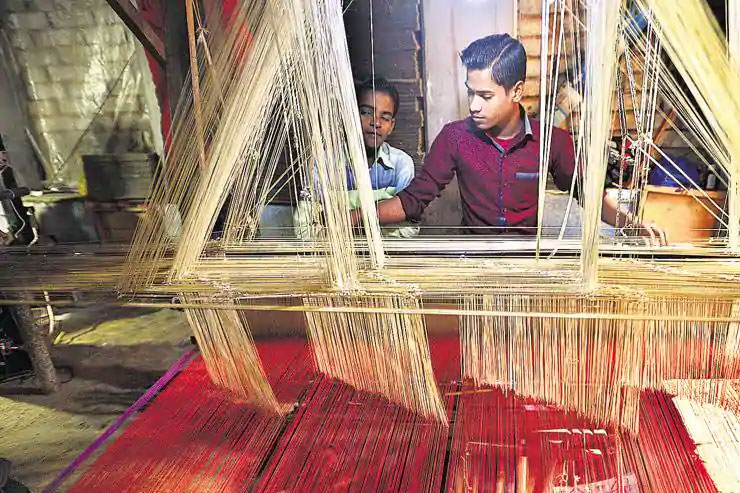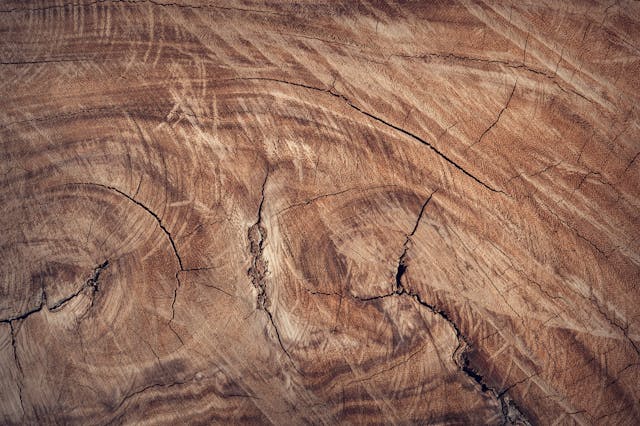The Kashmir region is often called “Paradise on Earth.” Apart from the stunning scenery and rich cultural history, Kashmir is well-known for its opulent silk. For generations, Kashmiri silk has represented elegance and luxury thanks to its exquisite quality, brilliant colours, and intricate designs. This blog will examine the history, skills, and cultural value of Kashmiri silk.
There are lots of fake silk products available in the market, so many suggest it would be better to explore Kashmir tour packages and explore the fabrics on your trip to the region. It wouldn’t make sense to take the trip just to explore the fabric. So Kashmir has a lot more offerings for those who wish to travel. You could look out for the best adventure sports in Kashmir to make your journey even more adventurous.
The History
When Sultan Zain-ul-Abidin, popularly known as Budshah, ruled in the fourteenth century, the Kashmiri silk industry first came into existence. He invited gifted Central Asian craftsmen to impart their knowledge of silk weaving and sericulture in Kashmir. Ever since then, the skill has expanded over the area and grown to be an important aspect of Kashmiri society.
Kashmiri silk weaving has undergone many influences and changes during its history, intimately relating to many cultural periods and geographical areas. The business has nevertheless been able to maintain its own character, and these modifications have given the craft even more appeal.
Silk As The Art of State

Kashmiri silk making is essentially a laborious process that calls for patience, accuracy, and skill. The first step in the process is to raise silkworms, or sericulture, in order to remove their cocoons, which turn into silk threads. The threads are then twisted into yarn and given a colour palette by natural dyes. Following such setup, the artisans erect a loom and weave it, combining the warp and weft to produce striking designs.
Traditional handlooms, used by most Kashmiri weavers, enable fine fabric design and quality control. The medium and ultimate result, though, could differ; it might be a silk shawl or a saree. Because silk threads and fabrics have an opulent texture and sheen, they are often used in rituals, celebrations and weddings.
Traditionally, flowers, leaves, and birds have been used into the weaving designs, which are influenced by nature. There may be other, symbolic connotations to the great diversity of patterns. The artistry and labour of the weaver are evident in every piece of Kashmiri silk that is produced and sold into the market.
Important Cultural Value

Beyond only its texture, Kashmiri silk preserves centuries-old cultural legacy and artistic brilliance. The life of craftsmen who are inspired by their environment is entwined with the technique of Kashmiri silk weaving. Because of the multicoloured silks, the weavings imitate nature. The artists get their daily inspiration from the terraces and gardens, where they can see images of legendary and actual birds and animals created by the floral and other natural themes.
Weddings and other celebrations are where the opulent Kashmiri silk cloth finds its use in most cases, but it also boosts the local economy. The production depends on the artisans, and for many, the industry itself offers a complicated source of income. The marketing of textiles and weavings fosters an expanding domestic market as well as demand outside, which is ever growing for products that are custom made instead of coming from mass production with no real sense of uniqueness.
Problems And Resolutions

The problems faced by craftsmen in modern times is the emergence of synthetic or machine-made materials and economic crises. But all this does not break their spirit. The Kashmiri silk industry is supported and developed by the Indian government as well as by a number of institutions and associations.
Raising knowledge of the fabric and sustainable manufacturing is crucial to preserving the art of Kashmiri silk weaving, as is inspiring the locals and craftspeople. Furthermore, India launched the National Master Craftsman Award competition. This will help bring interest to the industry as well as make a big dent in the craft’s economy.
Conclusion
Elegant, traditional, and skillfully made Kashmiri silk is the real deal in the fabric industry. Its cultural relevance and long history make it an important component of Kashmiri history. Every silk piece Kashmiri weavers produce still reflects their commitment and talent, in spite of the difficulties. The tradition of Kashmiri silk needs to flourish for future generations by encouraging and protecting this art form.
We must all come together to support all our local crafts and preserve our heritage. It’s the only way to keep the economy of the local artisans intact, instead of diverting all our savings to big corporations with deep pockets who care for nothing but their own profits.








